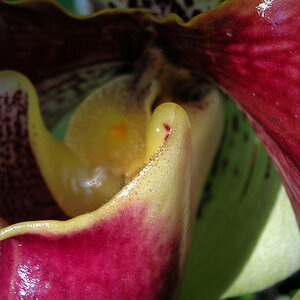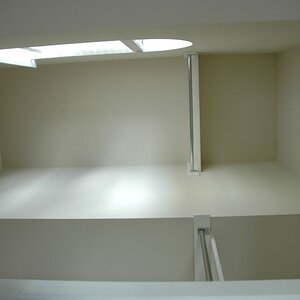- Joined
- Aug 27, 2012
- Messages
- 2,289
- Reaction score
- 661
- Location
- Orlando, FL
- Can others edit my Photos
- Photos OK to edit
How do I make the camera expose for the outside of the house, and then the flash lights the inside?
When I was taking this photo, I moved the little box over to the outside area, hoping it would expose for that, but then as you can see...it didn't.
Its too far gone to bring back those highlights in post...so this photo is shot...however I would like to know for next time.
Also this is shot at ISO 800, and I like to shoot my real estate photos at ISO 100, but when I put the camera in A mode and change it to ISO 100, the flash goes off, but the photo is still too dark...I am guessing that has to do with the shutter speed?
All I know is, this house has a water and golf course view, and I totally ruined showing that.

When I was taking this photo, I moved the little box over to the outside area, hoping it would expose for that, but then as you can see...it didn't.
Its too far gone to bring back those highlights in post...so this photo is shot...however I would like to know for next time.
Also this is shot at ISO 800, and I like to shoot my real estate photos at ISO 100, but when I put the camera in A mode and change it to ISO 100, the flash goes off, but the photo is still too dark...I am guessing that has to do with the shutter speed?
All I know is, this house has a water and golf course view, and I totally ruined showing that.


![[No title]](/data/xfmg/thumbnail/40/40312-7470c3c8f9e3a40e6b44c423096f188d.jpg?1619739414)


![[No title]](/data/xfmg/thumbnail/35/35929-8650428697cfb142a7b9a4e8ef731178.jpg?1619737232)
![[No title]](/data/xfmg/thumbnail/41/41900-d02b27da6248f10da25edf2413570222.jpg?1619739936)

![[No title]](/data/xfmg/thumbnail/39/39443-45e1b162b6c7c1d8ebbc8faf5623b705.jpg?1619739034)
![[No title]](/data/xfmg/thumbnail/35/35931-5e10675f3f7d827bc7ae4689f16bda8a.jpg?1619737234)
![[No title]](/data/xfmg/thumbnail/35/35932-28690c4fc247cf491230e47fc70ebeb5.jpg?1619737235)
![[No title]](/data/xfmg/thumbnail/41/41897-ea48d59eea1540d700b6e9051bce38da.jpg?1619739935)
![[No title]](/data/xfmg/thumbnail/41/41490-6af71315284539e04ae1878cda0d613f.jpg?1619739818)
![[No title]](/data/xfmg/thumbnail/41/41492-467958db3420bceb7ab410a12dcc681f.jpg?1619739819)